
story
Dulan’s Soul Food Kitchen | Terry Dulan
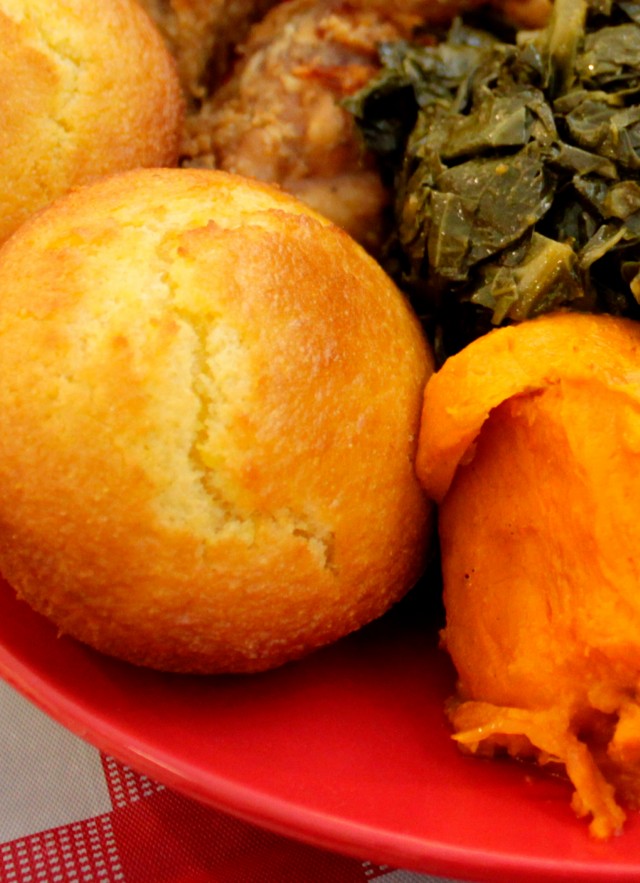
In an interview with Terry Dulan of Dulan's Soul Food Kitchen, he shares with us the story of his family's roots in L.A., the power of entrepreneurship, and how cornbread is at the heart of soul food. Terry’s father Adolf Dulan was the founder of the soul food enterprise and the self-proclaimed, “King of Soul Food.”
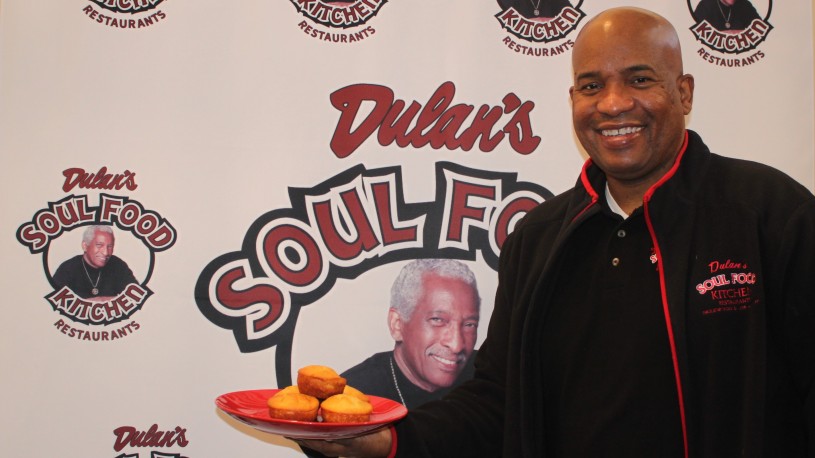
Cornbread is the item that pulls the whole soul food plate together.
- Terry Dulan
I started working in the family business at age eleven. So I got my start early, but then I went away to college. I came back to help my dad in the twilight of his life and run the business—so that's why I'm here.
The family business started in the 1970s with selling hamburgers, and grew to delicious soul food at Aunt Kizzy’s Back Porch. When someone had the idea of opening a soul food restaurant in Marina del Rey, California, they didn’t know what would happen—but it took off like wildfire! We had all kinds of celebrities: I ate food facing Elizabeth Taylor and many other celebrities! But also regular folks, blue-collar folks because everyone loved this place and the food was delicious.
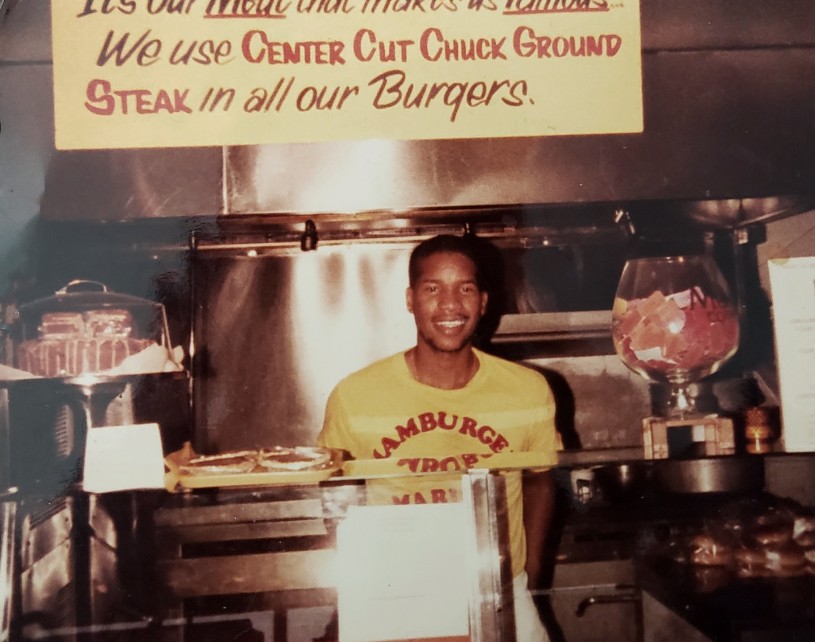
The recipes we use were handed down from the good cooks in my family, like my grandmother, aunts, and cousins. We have some really good stuff from them, especially the cornbread, and we brought in other cooks as well. Aunt Kizzy’s Back Porch had a good 30-year run, and established my dad as the King of Soul Food. In 1999, we opened Dulan’s Soul Food Kitchen and a second location opened in 2011 in Gramercy Park.
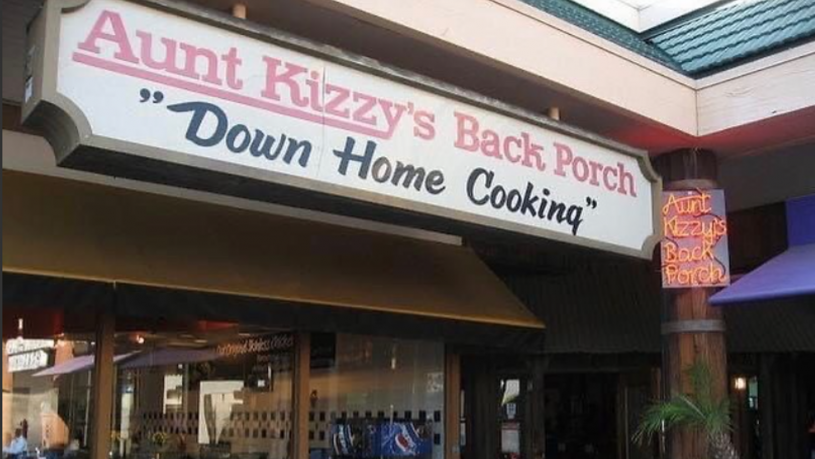
My dad was from Luther, Oklahoma and moved to Los Angeles in the 1960s. In those times, many people migrated from the South to California because of affirmative action and, overall, for better access. California was a little more socially progressive, and so at the time, Black folk were getting jobs like in the post office, as social workers, and as nurses. My mom was a nurse, and my dad was a social worker. At the age of 40, he realized that with the four kids he had then, there was no way he would be able to put them all through college [on a social worker's salary]. And so, he quit his job and opened the hamburger stand. The stand was initially an Orange Julius, and so there I was at eleven years old making Orange Juliuses and listening to him preach to his kids about entrepreneurship. Everyone thought he was crazy to leave his county job, but he fully believed in the power of positive thinking, thinking outside the box, and entrepreneurship. And that is what he did. He eventually changed it into a restaurant called Hamburger City—and it took off. So my parents, Adolf and Mary Dulan, opened a business and the rest is history—we are going on over 40 years.
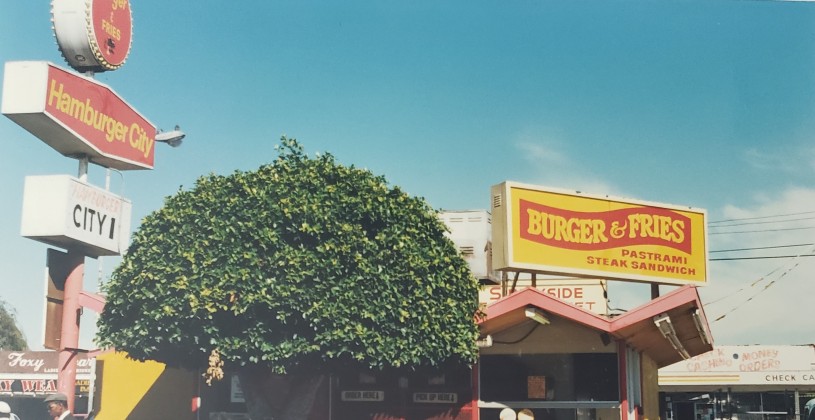
We have all kinds of customers. This is a blue-collar neighborhood, so there is that typical everyday customer. We also have customers who are headed to the Rams or Chargers games which is new, but we also get celebrities, comedians, and rappers who come through—so it is a pretty wide range. We have had a few rappers come through and buy food for the whole line of people waiting! So we've had everybody. There's no telling who might show up and I mean that literally!
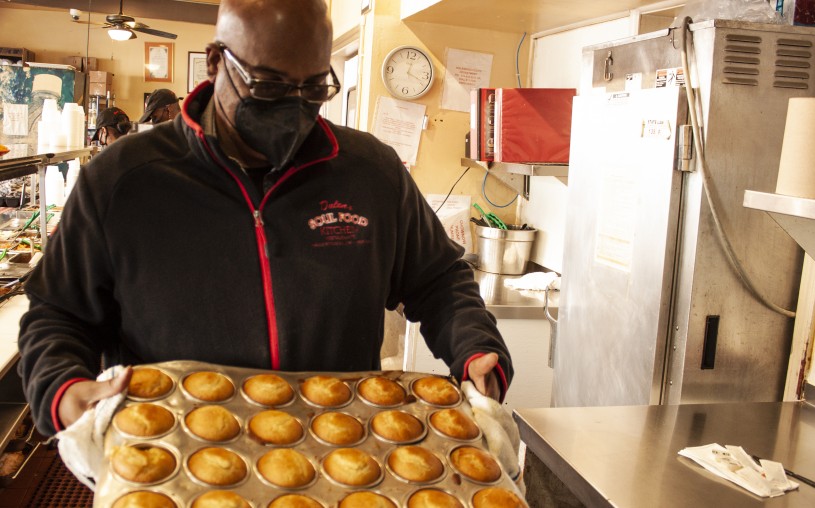
Cornbread is the item that pulls the whole soul food plate together. My favorite way to eat cornbread is to simply put a piece of cornbread in a cup and put black-eyed peas or red beans all over it. The juice from the beans, greens, or stew, we call that pot liquor. If you mix that with cornbread, it is almost like coffee and a donut—that is what it is all about and is to die for. So for me, cornbread connects the whole plate of soul food and I just love it!
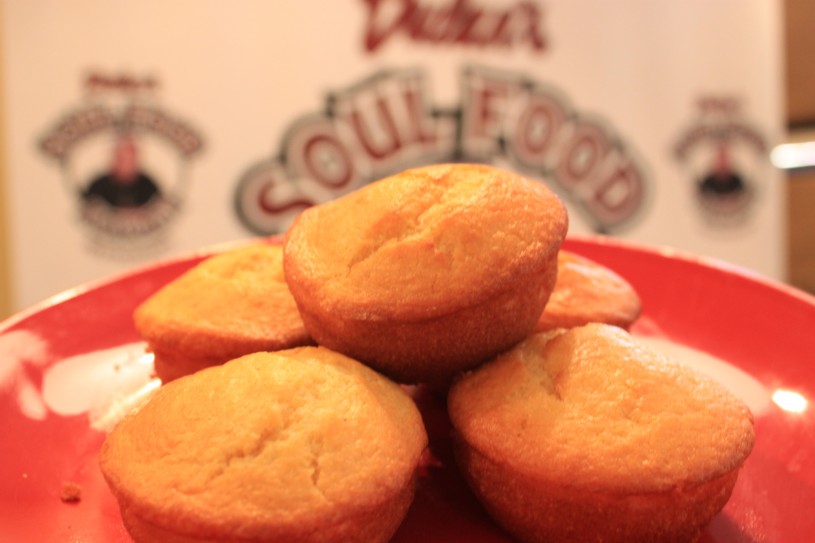
I have memories of making cornbread as a kid—mixing it, cooking in a cast iron pan, and cutting it. We would then mix it with red beans or stew and make that yummy goodness, well that is how we grew up. And that continues here with the beautiful cornbread muffins. It's just super delicious.
Here at the restaurant, we mix it old-fashioned style with cornmeal, flour, eggs, and sugar. We actually use a big paddle, our team doesn't like to use a mixer so that it stays legitimately old-fashioned. Since we mass produce, we have to make pan after pan of it. It's very popular and people just come in and buy four or five packs of cornbread.
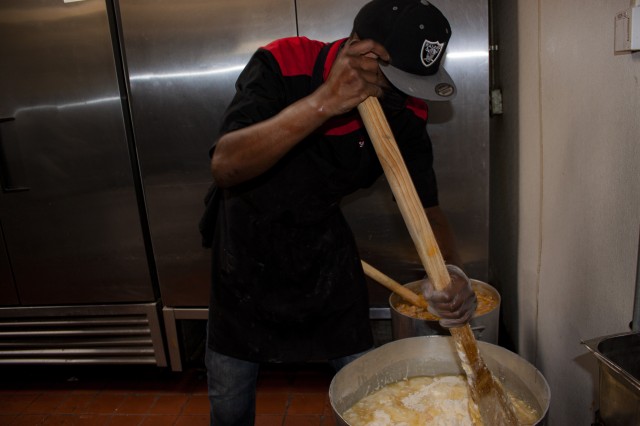
Dulan's staff pride themselves in hand mixing the cornbread ingredients by hand, for their daily batch of cornbread.
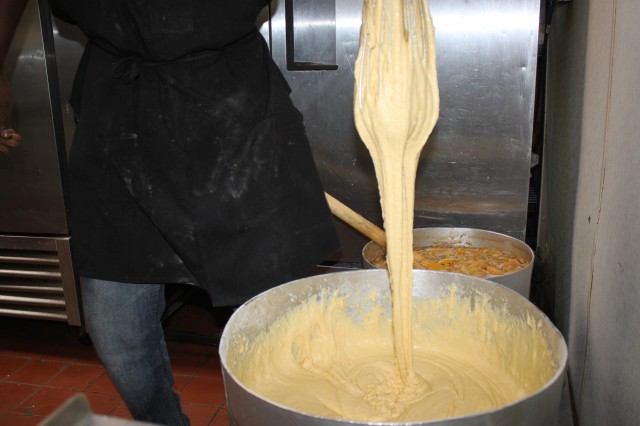
The cornbread ingredients are mixed and tested for consistency.

The cornbread muffins are carefully removed from the pan.
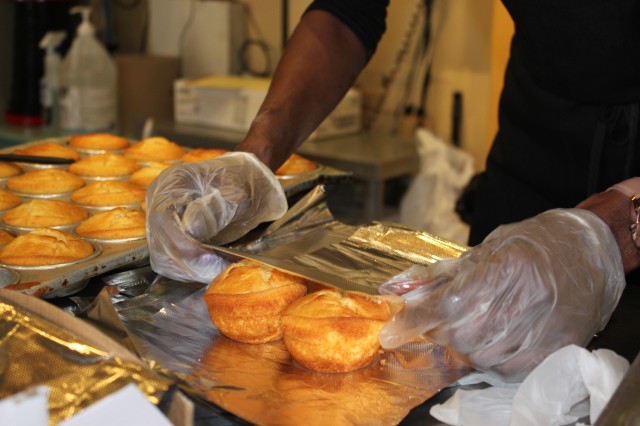
The warm cornbread muffins are wrapped in foil and are ready to add to curbside orders.
1 of 1
Dulan's staff pride themselves in hand mixing the cornbread ingredients by hand, for their daily batch of cornbread.
The cornbread ingredients are mixed and tested for consistency.
The cornbread muffins are carefully removed from the pan.
The warm cornbread muffins are wrapped in foil and are ready to add to curbside orders.
The Indigenous people of America had maize, which was introduced to the Europeans and Black folk. They used maize to make Johnny cakes or hoecakes (types of cornmeal flatbread) which weren’t really sweet. People started sweetening these with molasses or syrup and so recipes started to change over time—people experimented with adding milk, eggs, and the controversial sugar. And so what happened is that recipes updated with the addition of more ingredients, like topping it off with butter—so it just became different and evolved. That’s how we came to get the cornbread that is made here.
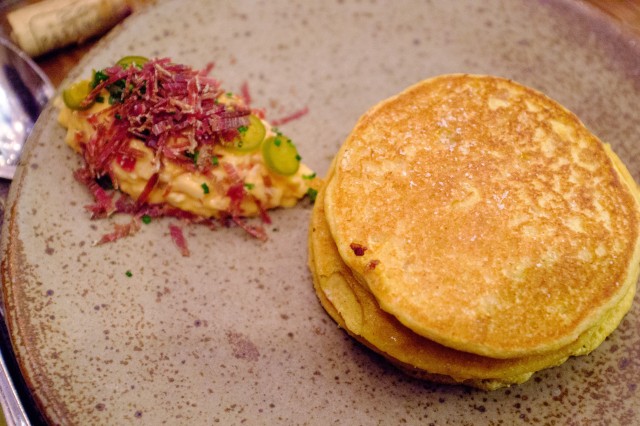
Prenshree Pillai, Flickr
Johnny cakes or hoecakes are cornmeal flatbreads that continue to be an early American staple food and eaten commonly in the American south.
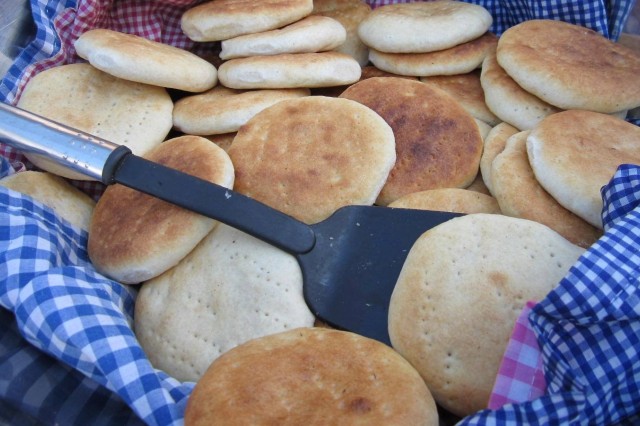
U.S. Embassy Belize, WikiMedia
Johnny cakes are widely popular in Belize and are also called journey cakes. They are typically unsweetened and eaten at breakfast and lunch.
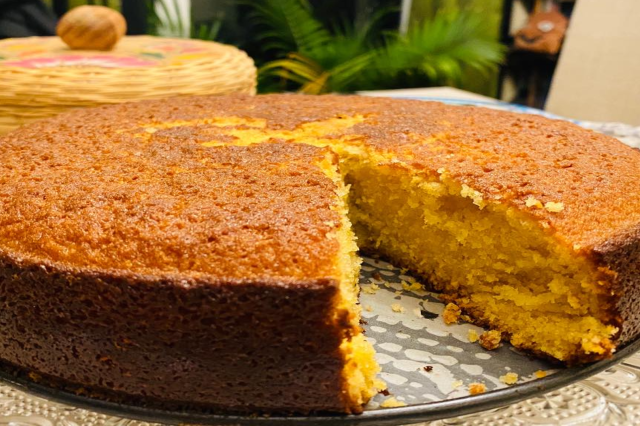
Kavita in the Kitchen, Facebook
Recipes for johnny cakes vary greatly in the Caribbean, but the Bahamian johnny cakes are traditionally baked in a large round plan until slightly browned, and served in wedges.
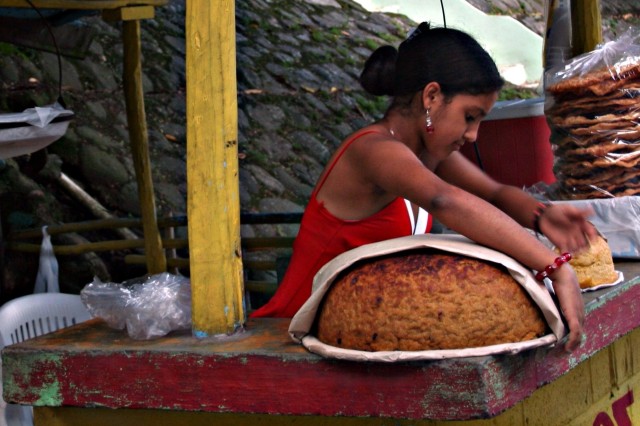
Mercedes, Flickr
In the Dominican Republic, cornbread cakes are typically deep-fried and are a popular beach snack. They are called yaniqueques, or yanikeke, and are bought roadside with arepas and tortas.
1 of 1
Johnny cakes or hoecakes are cornmeal flatbreads that continue to be an early American staple food and eaten commonly in the American south.
Prenshree Pillai, Flickr
Johnny cakes are widely popular in Belize and are also called journey cakes. They are typically unsweetened and eaten at breakfast and lunch.
U.S. Embassy Belize, WikiMedia
Recipes for johnny cakes vary greatly in the Caribbean, but the Bahamian johnny cakes are traditionally baked in a large round plan until slightly browned, and served in wedges.
Kavita in the Kitchen, Facebook
In the Dominican Republic, cornbread cakes are typically deep-fried and are a popular beach snack. They are called yaniqueques, or yanikeke, and are bought roadside with arepas and tortas.
Mercedes, Flickr
It is important to the community to get good cornbread—not only because it is central to eating soul food (you need to sop up all that juice from the yams, black-eyed peas, and greens!), but also we saw that they really needed it when the pandemic hit. As restaurant owners, we didn’t know what would happen to us when the pandemic started, and I was very afraid. We saw many restaurants going under, but what I found is that people wanted comfort food. And so they were ordering and coming in to take that food home so they didn't have to cook. Since we have hearty portions here, they could eat off our plates for a couple of days and they were buying extra cornbread to go with their meal. If we are making cornbread, people will wait 20 minutes to make sure they get it with their meal. People love it, and I love it!
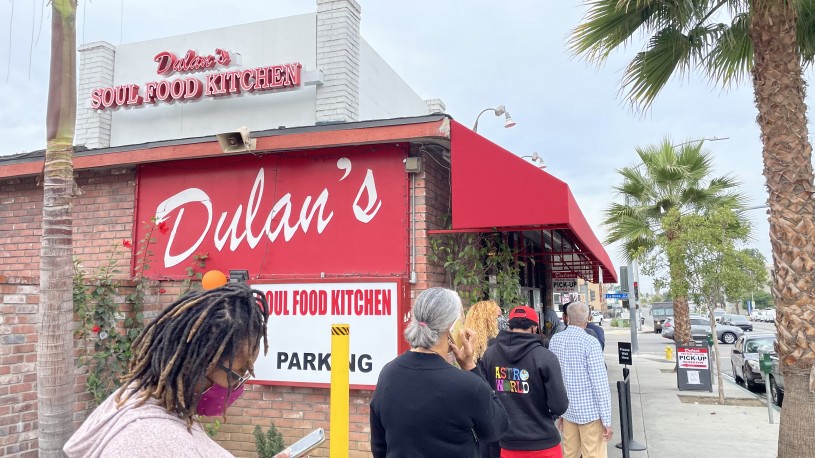
What we've come to see is that bread made from corn continues to be a staple item for people and has been throughout history. From the Indigenous folk who introduced it to everyone, through the history of Appalachia, and through slavery, it was everywhere. Everyone ate cornbread because it was abundant!
To see what's cooking at Dulan’s Soul Food Kitchen check out dulans-sfk.com or visit them at 202 E Manchester Blvd, Inglewood, CA 90301 and 1714 W Century Blvd, Los Angeles, CA 90047.
Do you know an L.A. breadmaker who lovingly connects to your community? Do you want to share your favorite experience at Dulan's Soul Food Kitchen? Join the conversation by tagging @NHMLA with #KneadedLA, and your story could be featured next!
Following the success of Kneaded: L.A. Bread Stories, we're celebrating the history, heritage, and communities of Los Angeles through the lens of different cultural traditions. This year, L.A. at Play highlights the vibrant and visionary work of artisans who fabricate dolls and figurines using a variety of techniques and materials.